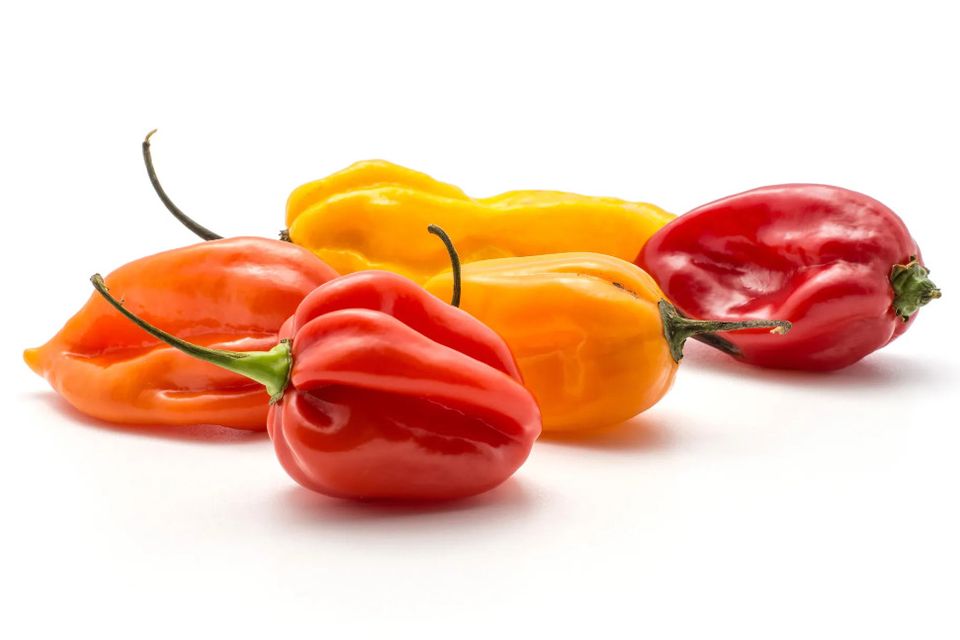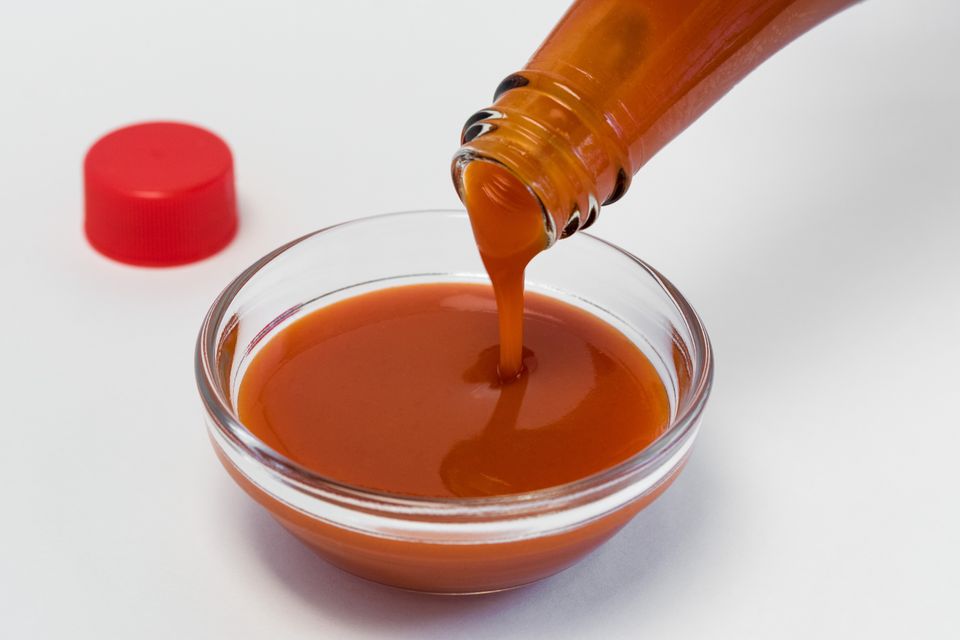
What are the Main Differences Between Chilis?
Chilies come in many different varieties, each with its own distinct flavor, heat level, and texture. Understanding the main differences between chilies can help you choose the right chili for your recipe and ensure the desired flavor and heat level.
Different chilies are used for different culinary purposes. For example, the poblano pepper is commonly used in Mexican cuisine for dishes like chiles rellenos, while the Thai bird's eye chili is a staple in Thai cuisine, used in dishes like green papaya salad and Tom Yum soup.
The heat level of chilies varies widely, from mild to extremely hot. This heat is measured on the Scoville scale, which rates the heat of chilies based on the amount of capsaicin they contain. Some mild chilies include the Anaheim pepper and poblano pepper, while hot chilies include the habanero pepper and the ghost pepper.
Chilies have different flavor profiles, ranging from fruity and sweet to smoky and earthy. For example, the jalapeño pepper has a slightly sweet and grassy flavor, while the chipotle pepper has a smoky, earthy flavor.
Chilies also vary in texture, from thick and fleshy to thin and wrinkled. For example, the bell pepper has a thick, crunchy flesh, while the Thai bird's eye chili has a thin, delicate skin.
Chilies come in a variety of colors, including green, red, yellow, orange, and purple. The color can affect the flavor profile and heat level of the chili.
Green chilies are often milder and less sweet than their more mature counterparts. They are commonly used in Mexican cuisine, such as in salsa verde or stuffed peppers.
Red chilies are more mature than green chilies and tend to be spicier and sweeter. They are commonly used in Indian cuisine, such as in curries and chutneys.
Yellow and orange chilies tend to be less spicy and have a slightly fruity flavor. They are commonly used in Caribbean and South American cuisine.
Purple chilies are less common than other colors and tend to have a slightly smoky flavor. They are commonly used in Korean cuisine.
It's worth noting that some chili varieties change color as they ripen, such as jalapeño peppers, which start green and turn red as they mature. In general, red chilies tend to be spicier and sweeter than green chilies, but this can vary depending on the specific variety of chili.
Different chilies are used for different culinary purposes. For example, the poblano pepper is commonly used in Mexican cuisine for dishes like chiles rellenos, while the Thai bird's eye chili is a staple in Thai cuisine, used in dishes like green papaya salad and Tom Yum soup.
The heat level of chilies varies widely, from mild to extremely hot. This heat is measured on the Scoville scale, which rates the heat of chilies based on the amount of capsaicin they contain. Some mild chilies include the Anaheim pepper and poblano pepper, while hot chilies include the habanero pepper and the ghost pepper.
Chilies have different flavor profiles, ranging from fruity and sweet to smoky and earthy. For example, the jalapeño pepper has a slightly sweet and grassy flavor, while the chipotle pepper has a smoky, earthy flavor.
Chilies also vary in texture, from thick and fleshy to thin and wrinkled. For example, the bell pepper has a thick, crunchy flesh, while the Thai bird's eye chili has a thin, delicate skin.
Chilies come in a variety of colors, including green, red, yellow, orange, and purple. The color can affect the flavor profile and heat level of the chili.
Green chilies are often milder and less sweet than their more mature counterparts. They are commonly used in Mexican cuisine, such as in salsa verde or stuffed peppers.
Red chilies are more mature than green chilies and tend to be spicier and sweeter. They are commonly used in Indian cuisine, such as in curries and chutneys.
Yellow and orange chilies tend to be less spicy and have a slightly fruity flavor. They are commonly used in Caribbean and South American cuisine.
Purple chilies are less common than other colors and tend to have a slightly smoky flavor. They are commonly used in Korean cuisine.
It's worth noting that some chili varieties change color as they ripen, such as jalapeño peppers, which start green and turn red as they mature. In general, red chilies tend to be spicier and sweeter than green chilies, but this can vary depending on the specific variety of chili.

The Advantage of Using Bottled Sauces
Bottled sauces can be a valuable tool for average cooks and chefs alike. Especially when they are looking to save time and ensure consistency in their dishes while still offering a wide range of flavors and heat levels.
Bottled sauces are made in large batches, ensuring that each bottle is consistent in flavor and texture. This makes it easier for chefs to create dishes with a predictable flavor profile.
Our bottled sauces come in a wide range of flavors and heat levels, allowing you to experiment with different flavors and create a variety of dishes without having to make multiple sauces from scratch.
These exotic pre-made sauces save chefs time in the kitchen, as they can simply add the sauce to a dish rather than spending time making it from scratch.
Bottled sauces can be a cost-effective option for chefs, as they eliminate the need to purchase and store large quantities of individual ingredients.
Our bottled sauces are readily available at online, making it easy for you to quickly purchase the sauces you need without having to make them from scratch.
Bottled sauces are made in large batches, ensuring that each bottle is consistent in flavor and texture. This makes it easier for chefs to create dishes with a predictable flavor profile.
Our bottled sauces come in a wide range of flavors and heat levels, allowing you to experiment with different flavors and create a variety of dishes without having to make multiple sauces from scratch.
These exotic pre-made sauces save chefs time in the kitchen, as they can simply add the sauce to a dish rather than spending time making it from scratch.
Bottled sauces can be a cost-effective option for chefs, as they eliminate the need to purchase and store large quantities of individual ingredients.
Our bottled sauces are readily available at online, making it easy for you to quickly purchase the sauces you need without having to make them from scratch.

Pairing the Right Hot Sauce
to Add to Your Meal
Pairing the right hot sauce with your meal can enhance the flavors of your food and provide an enjoyable eating experience. Finding the right hot sauce to enhance your meal can take some experimentation, but it's worth the effort to find the perfect combination.
Consider the flavor profile of your food. If your food has a strong flavor, like barbecued meats or smoked fish, consider using a mild hot sauce to complement the flavors rather than overpowering them. On the other hand, if your food is more bland or mild in flavor, like tofu or eggs, a spicier hot sauce can add some excitement to the dish.
When choosing a hot sauce, consider the heat level and your tolerance for spiciness. If you're sensitive to heat, start with a mild hot sauce and work your way up to hotter varieties. On the other hand, if you're a spice lover, go for a hotter hot sauce.
Hot sauce is often associated with specific cuisines, such as Mexican, Thai, or Cajun. Match the cuisine. Consider pairing your hot sauce with food from the same cuisine to ensure a complementary flavor profile.
Don't be afraid to try different combinations of hot sauce and food. Some unexpected pairings can lead to delicious discoveries. For example, a fruity hot sauce can complement a sweet dessert like ice cream or chocolate.
Hot sauce can be used as a condiment to add a little extra kick to a wide variety of dishes, including pizza, sandwiches, and soups. Use it sparingly at first and taste as you go to ensure you're not overpowering the other flavors in your dish.
Consider the flavor profile of your food. If your food has a strong flavor, like barbecued meats or smoked fish, consider using a mild hot sauce to complement the flavors rather than overpowering them. On the other hand, if your food is more bland or mild in flavor, like tofu or eggs, a spicier hot sauce can add some excitement to the dish.
When choosing a hot sauce, consider the heat level and your tolerance for spiciness. If you're sensitive to heat, start with a mild hot sauce and work your way up to hotter varieties. On the other hand, if you're a spice lover, go for a hotter hot sauce.
Hot sauce is often associated with specific cuisines, such as Mexican, Thai, or Cajun. Match the cuisine. Consider pairing your hot sauce with food from the same cuisine to ensure a complementary flavor profile.
Don't be afraid to try different combinations of hot sauce and food. Some unexpected pairings can lead to delicious discoveries. For example, a fruity hot sauce can complement a sweet dessert like ice cream or chocolate.
Hot sauce can be used as a condiment to add a little extra kick to a wide variety of dishes, including pizza, sandwiches, and soups. Use it sparingly at first and taste as you go to ensure you're not overpowering the other flavors in your dish.

History of Hot Sauce
Hot sauce has been an integral part of the culinary world for centuries. Here's a brief history of hot sauce:
The use of chili peppers in food dates back thousands of years to ancient civilizations in Mexico, Central America, and South America. The Aztecs, Mayans, and Incas all used chili peppers in their cooking.
As far as we can tell, the first hot sauce was made by the Aztecs, who mixed together chili peppers, tomatoes, and spices to create a flavorful condiment.
The Industrial Revolution led to the mass production of hot sauce, with companies like McIlhenny Company (the makers of Tabasco sauce) and Huy Fong Foods (the makers of Sriracha sauce) producing hot sauce on a large scale.
Hot sauce has become a regional specialty, with different parts of the world producing their own unique varieties of hot sauce. Louisiana-style hot sauce is known for its vinegary taste, while Mexican-style hot sauce typically contains chili peppers and spices.
Today, hot sauce is enjoyed by people all over the world. It's used to add flavor and heat to a variety of dishes, from traditional Mexican cuisine to fast food.
Hot sauce has come a long way since its ancient origins, and its popularity shows no signs of slowing down. Whether you prefer a mild heat or a fiery kick, there's a hot sauce out there for everyone.
The use of chili peppers in food dates back thousands of years to ancient civilizations in Mexico, Central America, and South America. The Aztecs, Mayans, and Incas all used chili peppers in their cooking.
As far as we can tell, the first hot sauce was made by the Aztecs, who mixed together chili peppers, tomatoes, and spices to create a flavorful condiment.
The Industrial Revolution led to the mass production of hot sauce, with companies like McIlhenny Company (the makers of Tabasco sauce) and Huy Fong Foods (the makers of Sriracha sauce) producing hot sauce on a large scale.
Hot sauce has become a regional specialty, with different parts of the world producing their own unique varieties of hot sauce. Louisiana-style hot sauce is known for its vinegary taste, while Mexican-style hot sauce typically contains chili peppers and spices.
Today, hot sauce is enjoyed by people all over the world. It's used to add flavor and heat to a variety of dishes, from traditional Mexican cuisine to fast food.
Hot sauce has come a long way since its ancient origins, and its popularity shows no signs of slowing down. Whether you prefer a mild heat or a fiery kick, there's a hot sauce out there for everyone.

Bottled Hot Sauce from Around the World
Bottled hot sauce has become a staple condiment in many households around the world. Each one has its own unique flavor profile and culinary use, making them a versatile condiment for a wide range of dishes.
Harissa Sauce (North Africa): made from chili peppers, garlic, cumin, coriander, and olive oil. It originated in North Africa and is commonly used in Tunisian and Moroccan cuisine. It's known for its deep red color and bold, smoky flavor.
Sambal Oelek is a spicy Indonesian sauce made from chili peppers, vinegar, and salt. It's known for its bright red color and pure chili flavor, with no added garlic or other spices.
Peri-peri sauce is a spicy and tangy sauce made from peri-peri chili peppers, lemon, garlic, and vinegar. It originated in South Africa and has become popular around the world, particularly in Portuguese cuisine. It's known for its fiery red color and bright, citrusy flavor.
Chimichurri is an Argentinean sauce made from parsley, garlic, red pepper flakes, vinegar, and oil.
Zhug is a Yemeni hot sauce made from chili peppers, garlic, coriander, and cumin.
Encona Sauce is a Caribbean hot sauce made from Scotch Bonnet chili peppers, vinegar, and mustard.
Shatta is a Middle Eastern hot sauce made from chili peppers, garlic, and oil.
Readily available, Sriracha sauce is a common spice. A very spicy and tangy sauce made from chili peppers, garlic, vinegar, sugar, and salt. It originated in Thailand and has become popular around the world. It's known for its bright red color and slightly sweet and garlicky flavor.
Kimchi is not a sauce, but more a spicy Korean condiment made from fermented vegetables, including chili peppers. Commonly sold in jars.
Cholula hot sauce is a mild Mexican hot sauce made from Piquin and Arbol chili peppers, vinegar, and spices. It's known for its distinctive wooden cap and medium heat level, with a slightly sweet and tangy flavor.
And, of course we have the more common types of bottled hot sauces, Tabasco and Louisiana Brand Hot Sauce. Both are a vinegar-based hot sauce made from Tabasco peppers, vinegar, and salt. Tabasco sauce originated in Louisiana and has been produced since 1868. It's known for its bright red color and strong, tangy flavor. First created in 1928, Louisiana Brand Hot Sauce is milder than Tabasco, but made from similar ingredients.
Harissa Sauce (North Africa): made from chili peppers, garlic, cumin, coriander, and olive oil. It originated in North Africa and is commonly used in Tunisian and Moroccan cuisine. It's known for its deep red color and bold, smoky flavor.
Sambal Oelek is a spicy Indonesian sauce made from chili peppers, vinegar, and salt. It's known for its bright red color and pure chili flavor, with no added garlic or other spices.
Peri-peri sauce is a spicy and tangy sauce made from peri-peri chili peppers, lemon, garlic, and vinegar. It originated in South Africa and has become popular around the world, particularly in Portuguese cuisine. It's known for its fiery red color and bright, citrusy flavor.
Chimichurri is an Argentinean sauce made from parsley, garlic, red pepper flakes, vinegar, and oil.
Zhug is a Yemeni hot sauce made from chili peppers, garlic, coriander, and cumin.
Encona Sauce is a Caribbean hot sauce made from Scotch Bonnet chili peppers, vinegar, and mustard.
Shatta is a Middle Eastern hot sauce made from chili peppers, garlic, and oil.
Readily available, Sriracha sauce is a common spice. A very spicy and tangy sauce made from chili peppers, garlic, vinegar, sugar, and salt. It originated in Thailand and has become popular around the world. It's known for its bright red color and slightly sweet and garlicky flavor.
Kimchi is not a sauce, but more a spicy Korean condiment made from fermented vegetables, including chili peppers. Commonly sold in jars.
Cholula hot sauce is a mild Mexican hot sauce made from Piquin and Arbol chili peppers, vinegar, and spices. It's known for its distinctive wooden cap and medium heat level, with a slightly sweet and tangy flavor.
And, of course we have the more common types of bottled hot sauces, Tabasco and Louisiana Brand Hot Sauce. Both are a vinegar-based hot sauce made from Tabasco peppers, vinegar, and salt. Tabasco sauce originated in Louisiana and has been produced since 1868. It's known for its bright red color and strong, tangy flavor. First created in 1928, Louisiana Brand Hot Sauce is milder than Tabasco, but made from similar ingredients.

Making Salsa from Scratch - Easy Recipe
Making salsa from scratch is easy and can be done in just a few steps. Here's a simple recipe to get you started.
Ingredients:
Instructions:
Begin by washing and dicing the tomatoes into small pieces. Remove the seeds and juice from the tomatoes to avoid a watery salsa.
Finely chop the onion and jalapeño peppers. Be sure to remove the seeds and veins from the jalapeño to adjust the heat level according to your preference.
Combine the diced tomatoes, onion, jalapeño peppers, and cilantro in a bowl.
Squeeze the juice of one lime over the mixture and stir everything together.
Add salt and pepper to taste.
Taste the salsa and adjust any seasoning or heat levels to your preference.
Chill the salsa for at least 30 minutes before serving to let the flavors meld together.
That's it! You now have fresh, delicious salsa that you can serve with chips, tacos, or any of your favorite dishes.
Ingredients:
- 4-5 ripe tomatoes, diced
- 1 small onion, finely chopped
- 1-2 jalapeño peppers, seeded and finely chopped
- 1/4 cup chopped fresh cilantro
- 1 lime, juiced
- Salt and pepper to taste
Instructions:
Begin by washing and dicing the tomatoes into small pieces. Remove the seeds and juice from the tomatoes to avoid a watery salsa.
Finely chop the onion and jalapeño peppers. Be sure to remove the seeds and veins from the jalapeño to adjust the heat level according to your preference.
Combine the diced tomatoes, onion, jalapeño peppers, and cilantro in a bowl.
Squeeze the juice of one lime over the mixture and stir everything together.
Add salt and pepper to taste.
Taste the salsa and adjust any seasoning or heat levels to your preference.
Chill the salsa for at least 30 minutes before serving to let the flavors meld together.
That's it! You now have fresh, delicious salsa that you can serve with chips, tacos, or any of your favorite dishes.

Starting a Hot Sauce Business
Starting a hot sauce business can be a challenging but rewarding venture. Many hot sauces businesses are extremely profitable. Businesses that get their sauce into national retailers can bring in six and seven figure revenues each year.
Here are some steps you can take to get started:
Research and develop your recipe: Before starting your hot sauce business, you'll need to create a recipe that you believe is unique and delicious. Experiment with different ingredients and spice levels until you find the perfect combination.
Obtain necessary licenses and permits: Depending on where you plan to sell your hot sauce, you may need to obtain certain licenses and permits to operate your business legally. Check with your local government and health department to find out what requirements apply to your area.
Develop your brand: Your hot sauce business will need a name, logo, and branding that sets it apart from the competition. Consider hiring a graphic designer or marketing professional to help you create a brand that reflects the unique qualities of your hot sauce.
Set up your production facility: You'll need a clean, sanitary facility to produce your hot sauce. Depending on the scale of your operation, you may be able to start in your home kitchen or you may need to rent a commercial kitchen space.
Source ingredients and packaging: Once you have your recipe, you'll need to source the ingredients and packaging materials for your hot sauce. Consider buying in bulk to save money and ensure consistent quality.
Market and sell your hot sauce: You can sell your hot sauce online, at local markets and events, or through retailers. Develop a marketing plan that includes social media, advertising, and public relations to build awareness of your brand and attract customers.
Starting a hot sauce business takes hard work and dedication, but with the right recipe, branding, and marketing, you can build a successful and profitable enterprise.
Here are some steps you can take to get started:
Research and develop your recipe: Before starting your hot sauce business, you'll need to create a recipe that you believe is unique and delicious. Experiment with different ingredients and spice levels until you find the perfect combination.
Obtain necessary licenses and permits: Depending on where you plan to sell your hot sauce, you may need to obtain certain licenses and permits to operate your business legally. Check with your local government and health department to find out what requirements apply to your area.
Develop your brand: Your hot sauce business will need a name, logo, and branding that sets it apart from the competition. Consider hiring a graphic designer or marketing professional to help you create a brand that reflects the unique qualities of your hot sauce.
Set up your production facility: You'll need a clean, sanitary facility to produce your hot sauce. Depending on the scale of your operation, you may be able to start in your home kitchen or you may need to rent a commercial kitchen space.
Source ingredients and packaging: Once you have your recipe, you'll need to source the ingredients and packaging materials for your hot sauce. Consider buying in bulk to save money and ensure consistent quality.
Market and sell your hot sauce: You can sell your hot sauce online, at local markets and events, or through retailers. Develop a marketing plan that includes social media, advertising, and public relations to build awareness of your brand and attract customers.
Starting a hot sauce business takes hard work and dedication, but with the right recipe, branding, and marketing, you can build a successful and profitable enterprise.
A very special thanks to:
Video by RDNE Stock project: https://www.pexels.com/video/a-person-putting-hot-sauce-on-fried-pork-rinds-5738730/
Video by Phillip Dillow: https://www.pexels.com/video/making-of-a-thick-gravy-5564267/
Video by Oleg Gamulinskii: https://www.pexels.com/video/blazing-fire-2715412/
Video by Los Muertos Crew: https://www.pexels.com/video/close-up-vide-of-a-person-preparing-food-7613578/
Video by RDNE Stock project: https://www.pexels.com/video/a-person-putting-hot-sauce-on-fried-pork-rinds-5738730/
Video by Phillip Dillow: https://www.pexels.com/video/making-of-a-thick-gravy-5564267/
Video by Oleg Gamulinskii: https://www.pexels.com/video/blazing-fire-2715412/
Video by Los Muertos Crew: https://www.pexels.com/video/close-up-vide-of-a-person-preparing-food-7613578/
